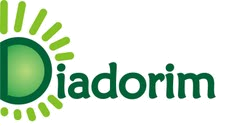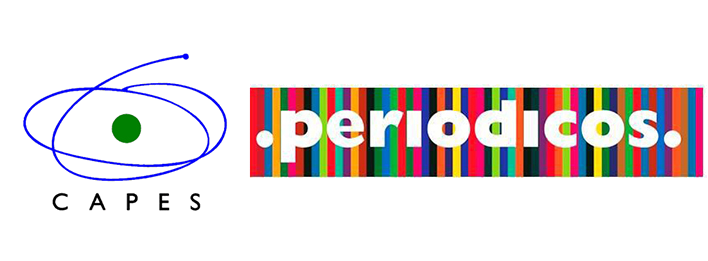Comunicação Digital e Inbound Marketing: estratégias aplicadas ao setor do turismo em Portugal
Palavras-chave:
Comunicação digital, inbound marketing, marketing de contéudosResumo
A explosão de opções de produtos e de canais digitais, juntamente com o aparecimento de um consumidor exigente e informado, têm revelado implicações no processo de compra e no marketing. Crescentemente, o consumidor assume o controlo do processo e procura ativamente as informações que considera úteis (Court et al., 2009). O novo paradigma é intitulado de inbound marketing. Neste contexto, as marcas sentem a importância de integrar a voz do consumidor numa comunicação bilateral valorizada pelas estratégias de inbound marketing. Porém, o tema é ainda recente e academicamente pouco explorado. Daí, surge como objetivo o estudo da aplicação de estratégias de inbound marketing, suportado pela questão de partida: Quais são os pontos-chave na implementação de estratégias de inbound marketing pelo Operador Turístico S (Optou-se por esta designação, para proteger a identidade do Operador em causa)? Para esse efeito, procurámos explorar e cruzar os temas “marketing de conteúdos” e “marketing dos media sociais” (estratégias aplicadas pela empresa) na tradução de indicadores de sucesso para o inbound marketing. Optou-se por uma metodologia qualitativa, com recurso à análise de conteúdo de entrevistas e de pesquisa documental. Este estudo evidencia a importância da incorporação do marketing de conteúdos nas estratégias de inbound marketing das empresas. Sendo o objetivo do inbound marketing atrair o consumidor, é fundamental despertar, neste, o interesse de procurar pelo Operador S e a construção de atitudes positivas. Para reforçar isso, o Operador S oferece um storytelling valioso para o consumidor, aliado a uma componente emocional. O processo envolve o investimento em conversas contínuas que incentivam o engagement, possível através de meios de natureza participativa e colaborativa, o que é o caso das redes sociais. A acessibilidade das ferramentas deste meio permite a partilha de conteúdo não invasivo, deixando o poder, no consumidor, de decidir em que circunstâncias procura pela marca.
Referências
Amaral, I. (2012). Participação em rede: Do utilizador ao "Consumidor 2.0 " e ao "Prosumer. Comunicação e Sociedade, 22, pp.131-147.
Assiriyage, H., Zoeckler, I., Aghado, E., Bu,K., Jiang, X., Kamble, R., & Wang,Y. (2018). Inbound marketing. (Master’s Papers) Clark University: School of Professional Studies.
Barker, R., & Gower, K. (2010). Strategic application of storytelling in organizations: Toward effective communication in a diverse world. Journal Of Business Communication, 47(3), pp. 295-312.
Castells, M., & Cardoso, G. (2005). A Sociedade em Rede - Do Conhecimento à Ação Política. Lisboa: Imprensa Nacional - Casa da Moeda.
Chaffey, D., & Smith, PR. (2013). Emarketing excellence: planning and optimizing your digital marketing (4ª ed.). London: Routledge.
Constantinides, E., & Fountain, S. (2008). Web 2.0: Conceptual foundations and marketing issues. Journal of Direct, Data and Digital Marketing Practice 9 (3), pp. 231- 244.
Court, D., Elzinga, D., Mulder, S., & Vetvik, O. (2009). The consumer decision journey. McKinsey Quarterly.
Du Plessis, C. (2015a). Academic guidelines for content marketing: Research-based recommendations for better practice. Department of Communication Science: University of South Africa
Du Plessis, C. (2015b). Proceedings of the European Conference on Social Media. An exploratory analysis of essential elements of content marketing, 9–10 Julho. Porto: Academic Conferences Publisher International.
Du Plessis, C. (2015c). Brand storytelling: The case of the Coca Cola Journey website. Communitas: Journal for Community Communication.
Esteves, A., & Azevedo, J. (1998). Metodologias Qualitativas para as Ciências Sociais. Porto: Instituto de Sociologia. Gates, B. (1996). Content is king.
Fonseca, J. J. S. (2002) Metodologia da pesquisa científica. Fortaleza: UEC. Apostila.
Gibson, O. (2005). Shopper's eye view of ads that pass us by. The Guardian.
Godoy, A. (1995). Introdução à pesquisa qualitativa e suas possibilidades. 35(2), pp.57-63. São Paulo: Revista da administração de empresas.
Gonçalves, A. (2004). Métodos e técnicas de investigação. Universidade do Minho: Instituto de ciências sociais.
Guba, E. G., & Lincoln, Y. S. (1981). Effective evaluation: Improving the usefulness of evaluation results through responsive and naturalistic approaches. Jossey-Bass.
Holliman, G., & Rowley, J. (2014). Business to business digital content marketing: marketers’ perceptions of best practice. Journal of Research in Interactive Marketing, 8 (4), 269 – 293.
Jenkins, H., Clinton, K., Purushotma, R., Robison, A., & Weigel, M. (2009). Confronting the Challenges of Participatory Culture: Media Education for the 21st Century. Chicago: The MacArthur Foundation.
Kaplan, A., & Haenlein, M. (2010). Users of the world, unite! The challenges and opportunities of Social Media. Business Horizons 53(1), pp. 59-68.
Lecinski, J. (2011). ZMOT – Winning the zero moment of truth. Google Inc.
Lundqvist, A., Liljander, V., Gummerus, J., & Van Riel, A. (2013). The impact of storytelling on the consumer brand experience: The case of a firm originated story. Journal of Brand Management, 20(4), pp. 283-297.
Lune, H., & Berg, B. (2017). Qualitative Research Methods for the Social Sciences (9ª ed.). Edinburgh: Pearson Education.
Miller, G. (1956). The magical number seven, plus or minus two: some limits on our capacity for processing information. Harvard University 63 (2), pp. 81-97.
Neti, S. (2011). Social media and its role in marketing. International Journal of Enterprise Computing and Business Systems, 1 (2), pp.1-15.
Opreana, A., & Vinerean, S. (2015). A new Development in online marketing: Introducing Digital Inbound Marketing. Expert Journal of Marketing, 26(1), pp. 1153–1159.
O’Reilly, T. (2015). What Is Web 2.0. Design Patterns and Business Models for the Next Generation of Software. O’Reilly Media, Inc.
Pombal, B., Lopes, C., & Barreira, N. (2008). A importância da recolha de dados na avaliação de Serviços de Documentação e Informação: a aplicabilidade do SharePoint nos SDI da FEUP. Porto: Faculdade de Engenharia.
Pulizzi, J. (2012). The rise of storytelling as the new marketing. Publishing research quarterly, 28(2), pp. 116-123.
Pulizzi, J. (2014). EPIC Content Marketing: How to Tell a Different Story, Break Through the Clutter, and Win More Customers by Marketing Less. McGraw-Hill Professional.
Rantanen, T. (2010). The message is the medium. An interview with Manuel Castells. Global Media and Communication, pp. 134-147.
Silva, A., & Fossá, M. (2015). Análise de conteúdo: Exemplo para aplicação da técnica para análise de dados qualitativos. Qualit@s Revista Eletrônica.
Świeczak, W. (2014a). Content marketing as an important element of marketing strategy of scientific institutions. Minib, pp. 130-151.
Świeczak, W. (2014b). Inbound Marketing as an integral part of the marketing strategy of a modern enterprises. Minib, 12 (2).
Teixeira, T. (2014). The Rising Cost of Consumer Attention: Why You Should Care, and What You Can Do about It. Working paper. Harvard Business School.
Terra, C. (2009). Usuário Mídia: o quinto poder.
Tugend, A. (2015). From Bedtime to the Boardroom: Why Storytelling Matters in Business. Entrepreneur.
Zilincan, J. (2015). Search Engine Optimization. In Search Engine Optimization (pp. 506 – 511). Praga.
Livros
Adolpho, C. (2014). Os 8 Ps do marketing digital: o guia estratégico de marketing digital (2ªed.). Alfragide: Texto editores.
Adolpho, C. (2016). Os 8 Ps do marketing digital: o guia estratégico de marketing digital (3ªed.). Alfragide: Texto editores.
Anderson, C. (2006). A cauda longa. Tradução de Afonso Celso da Cunha Serra. Rio de Janeiro, Elsevier.
Bardin, L. (1977). Análise de conteúdo. São Paulo: Edições 70.
Berger, J. (2014). Contágio. O que torna as coisas populares à escala mundial (1ªed.). Lisboa: Clube do Autor.
Cardoso, G. (2009). Da comunicação de massa à comunicação em rede. Porto: Porto Editora.
Carrrera, F. (2009). Marketing digital na versão 2.0: o que não pode ignorar (1ªed.) Lisboa: Sílabo
Cova, B., Kozinets, R., & Shankar, A. (2007). Consumer tribes. New York: Elsevier.
Dionísio, P., Rodrigues, J., Faria, H., Canhoto, R., & Nunes, R. (2009). b-Mercator Blended Marketing (1ª ed.). Lisboa: Publicações Dom Quixote.
Kotler, P., Kartajaya, H., & Setiwan, I. (2010). Marketing 3.0: Do produto e do consumidor até ao espírito humano (1ª ed.). Coimbra: Actual Editora.
Kotler, P. (2013). Marketing para o século XXI (7ª ed.). Lisboa: Editorial Presença
Kotler, P., Kartajaya, H., & Setiawan, I. (2017). Marketing 4.0: do tradicional ao digital. Rio de Janeiro: Sextante.
Lambin, J. (2000). Marketing Estratégico (4ªed.). Lisboa: McGraw-Hill
Lévy, P. (2003). A inteligência coletiva: por um antropologista do ciberespaço (4ª ed.). São Paulo: Loyola.
Lieb, R. (2011). Content marketing. USA: QUE Publishing.
Lindon, D., Lendrevie, J., Lévy, J., Dionísio, P., & Rodrigues, J. (2004), Mercator XXI: Teoria e Prática do Marketing (10ª ed.). Lisboa, Dom Quixote.
Marconi, M. A., & Lakatos, E. M. (2007). Fundamentos de metodologia científica. São Paulo: Editora Atlas.
Miller, M. (2011). The ultimate web marketing guide (2ª ed.). United States on America: Que Publishing.
Oliveira, E., & Ferreira, P. (2014). Métodos de investigação – da interrogação à descoberta científica. Porto: Vida Económica.
Quivy, R., & Campenhoudt, L. (2005). Manual de Investigação em Ciências Sociais. (4ªed.) Lisboa: Gradiva
Tapscott, D., & Williams, A. (2007). Wikinomics. How Mass Collaboration Changes Everything. United States of America: Penguin Group.
Toffler, A. (1980). The third wave (6ªed.). Nova Iorque: Batman Books.
Torres, C. (2009). A Bíblia do marketing digital: tudo o que você queria saber sobre marketing e publicidade na internet e não tinha a quem perguntar (1ª ed.). São Paulo: Novatec Editora.
Alas, J. (2017). O papel do storytelling na construção da estratégia e identidade de uma cidade: O caso da cidade do Porto. (Dissertação de Mestrado). Escola Superior do Porto, Porto.
Costa, V. (2017). Plano de negócios para a criação de um operador turístico. (Dissertação de Mestrado). Instituto Superior de Contabilidade e Administração do Porto, Porto.
Machado, A. (2004). Content marketing em Portugal: Um estudo qualitativo em agências de publicidade/comunicação. (Dissertação de Mestrado). Lisboa School of Economics and Management, Lisboa.
Halldén, A., Dahlin, A. (2018) Content with Content? A qualitative study on the implementation, maturity and future of inbound marketing strategies in the Swedish B2B sectorContent with Content? A qualitative study on the implementation, maturity and future of inbound marketing strategies in the Swedish B2B sector. (Dissertação de Mestrado). International Business School, Jönköping University.
Rufino, C. (2009). A sociedade em rede e a segunda geração da internet: reflexões para o campo da comunicação organizacional. Trabalho Pós Graduação. Universidade Metodista de São Paulo.
Downloads
Publicado
Como Citar
Edição
Seção
Licença
Copyright (c) 2022 Prof.ª, Dr.ª

Este trabalho está licenciado sob uma licença Creative Commons Attribution 4.0 International License.
Autores que publicam nesta revista concordam com os seguintes termos:
- Autores mantém os direitos autorais e concedem à revista, sem ônus para a mesma, o direito de primeira publicação, com o trabalho simultaneamente licenciado sob a Licença Creative Commons Attribution que permite o compartilhamento do trabalho com reconhecimento da autoria e publicação inicial nesta revista
- Autores têm autorização para assumir contratos adicionais separadamente, para distribuição não-exclusiva da versão do trabalho publicada nesta revista (ex.: publicar em repositório institucional ou como capítulo de livro), com reconhecimento de autoria e publicação inicial nesta revista.
- Autores assumem exclusiva responsabilidade pelas suas opiniões emitidas nos trabalhos publicados nesta revista
















